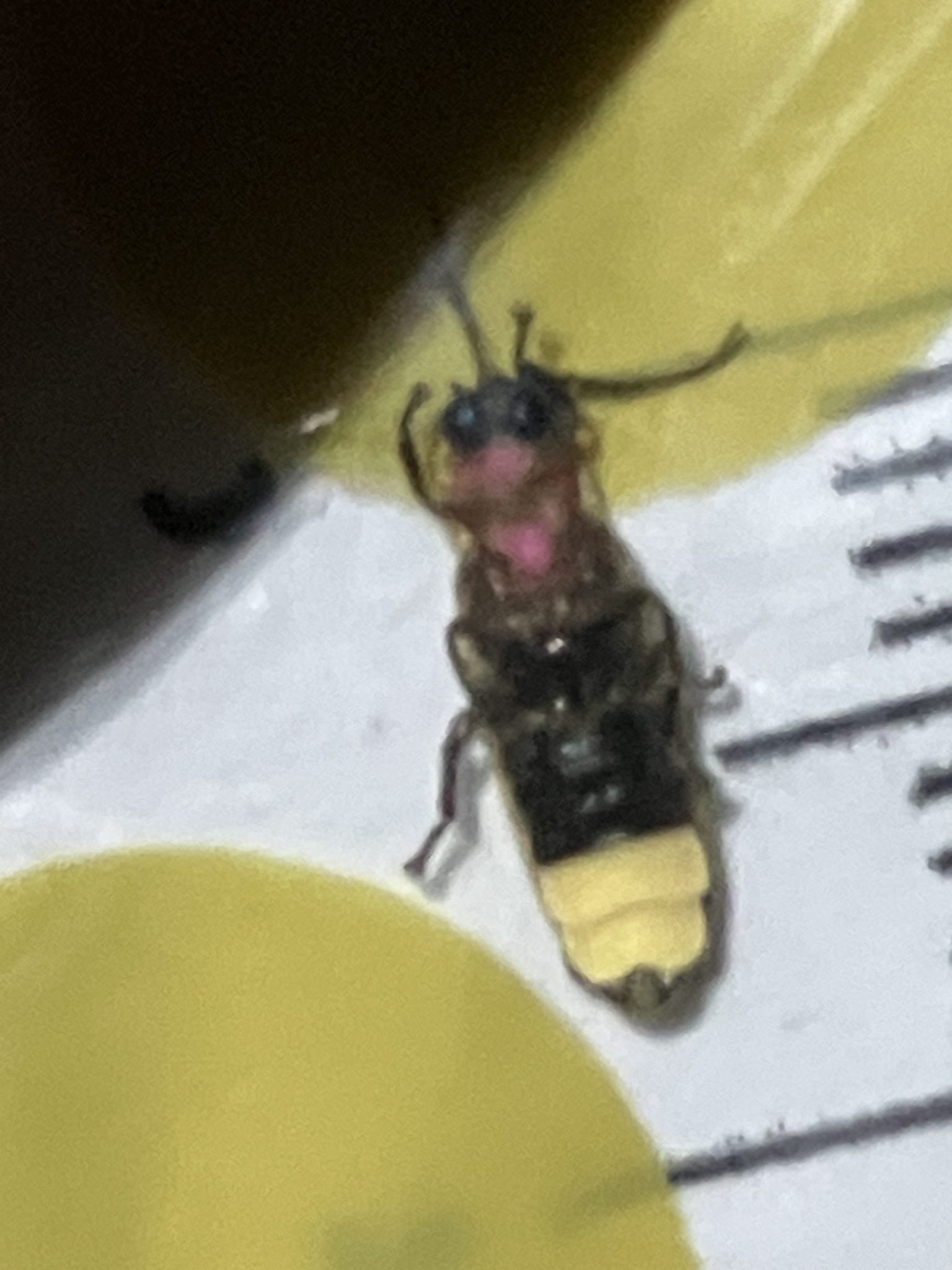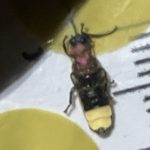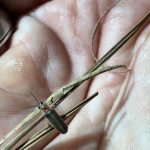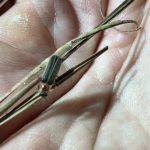Notice: Below is a list of 0 important links included on this page.
Please note that while screen readers have made significant strides, they may still lack full support for optimal web accessibility.





You must be logged in to post a comment.
This is a project of the Xerces Society, working in collaboration with the IUCN SSC Firefly Specialist Group and New Mexico BioPark Society.
Copyright © 2025 The Xerces Society •1631 NE Broadway Street, #821 • Portland OR 97232 USA
Interesting observation! The small size (7-8 mm from tip of elytra to tip of pronotum) and the apparent lack of pale edging on ventrite IV (the segment in front of the lanterns) suggest a species other than Photinus pyralis.
Based on the pale scutellum, the shape of the pronotal/head shield marking, and your description of the flash pattern, one possibility would be Photinus umbratus. This would be exciting because it hasn’t been recorded in South Carolina in a long time. Here is the IUCN profile: https://www.iucnredlist.org/species/164046023/166771588.
Photinus australis (“twilight bushbaby”) is another possibility, but the coloration of the underside and the lack of markings on the outer edges of the pronotum don’t look right to me.
A close-up view of the pygidium (“tail”) is often helpful for narrowing down the list of possible species.